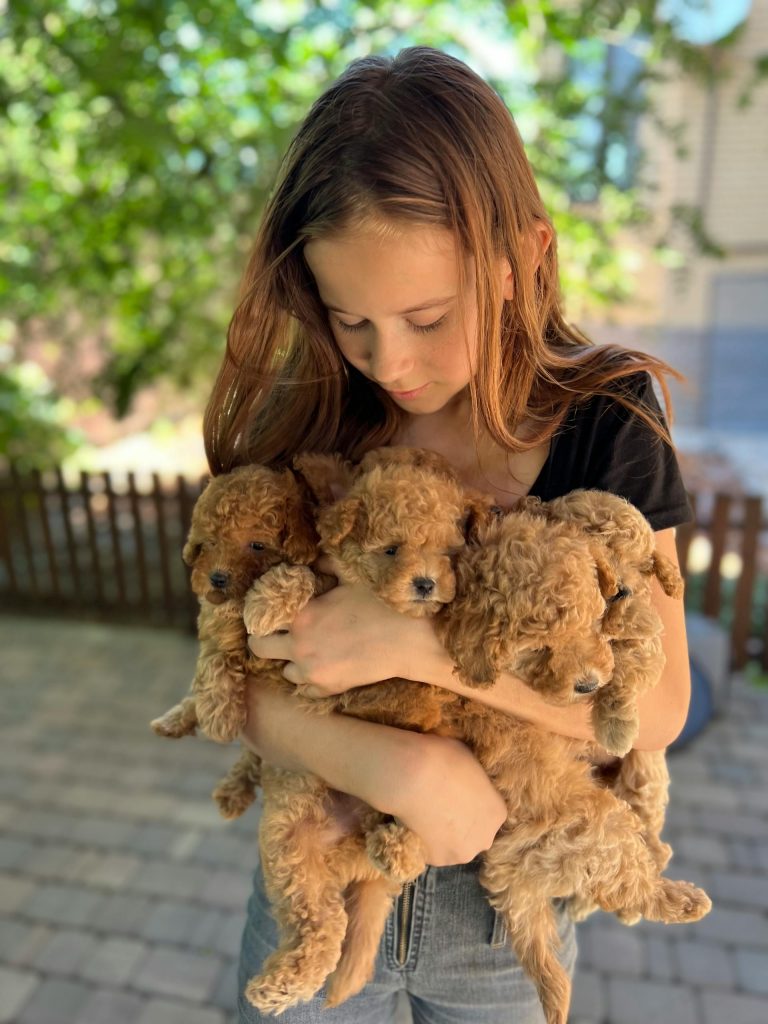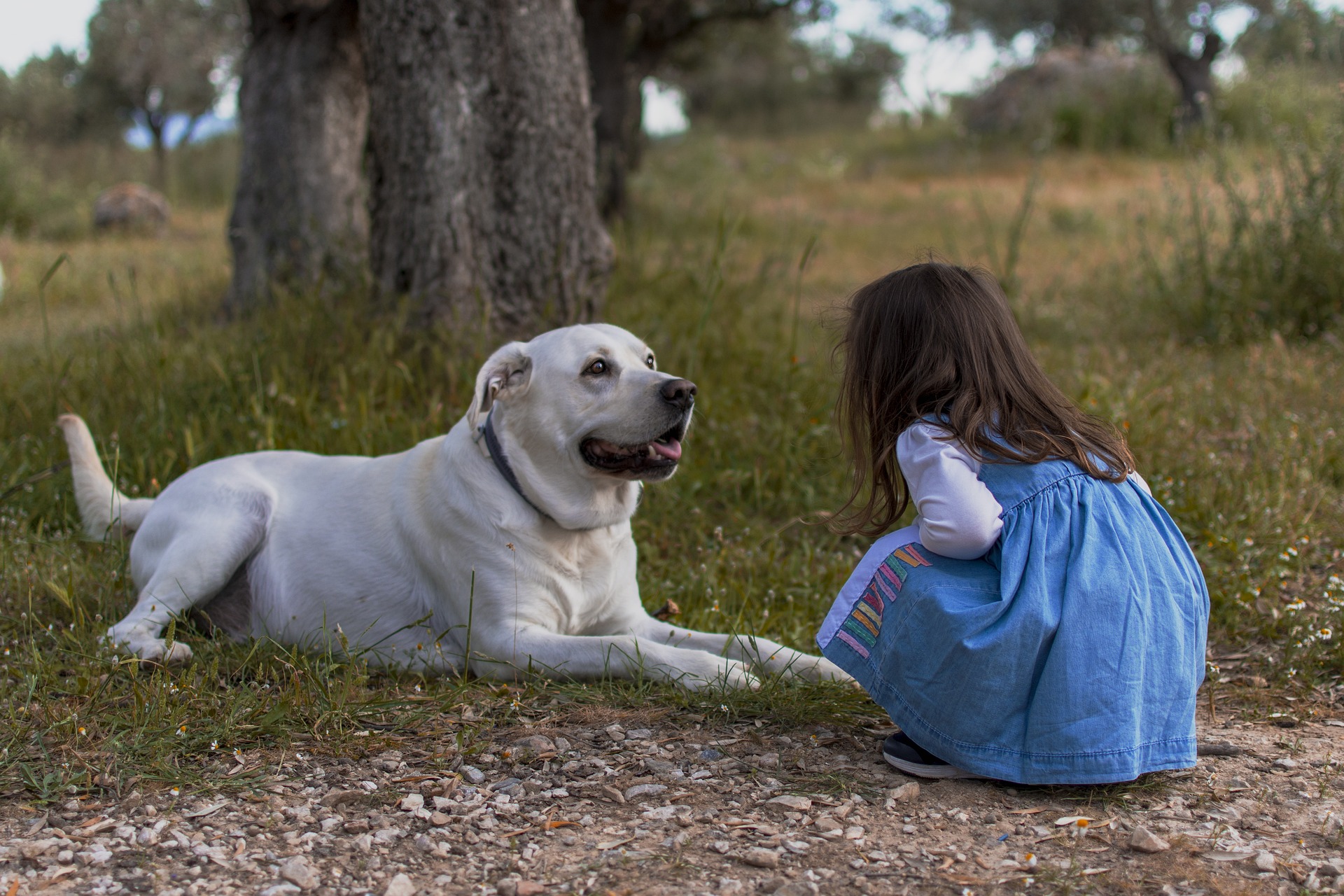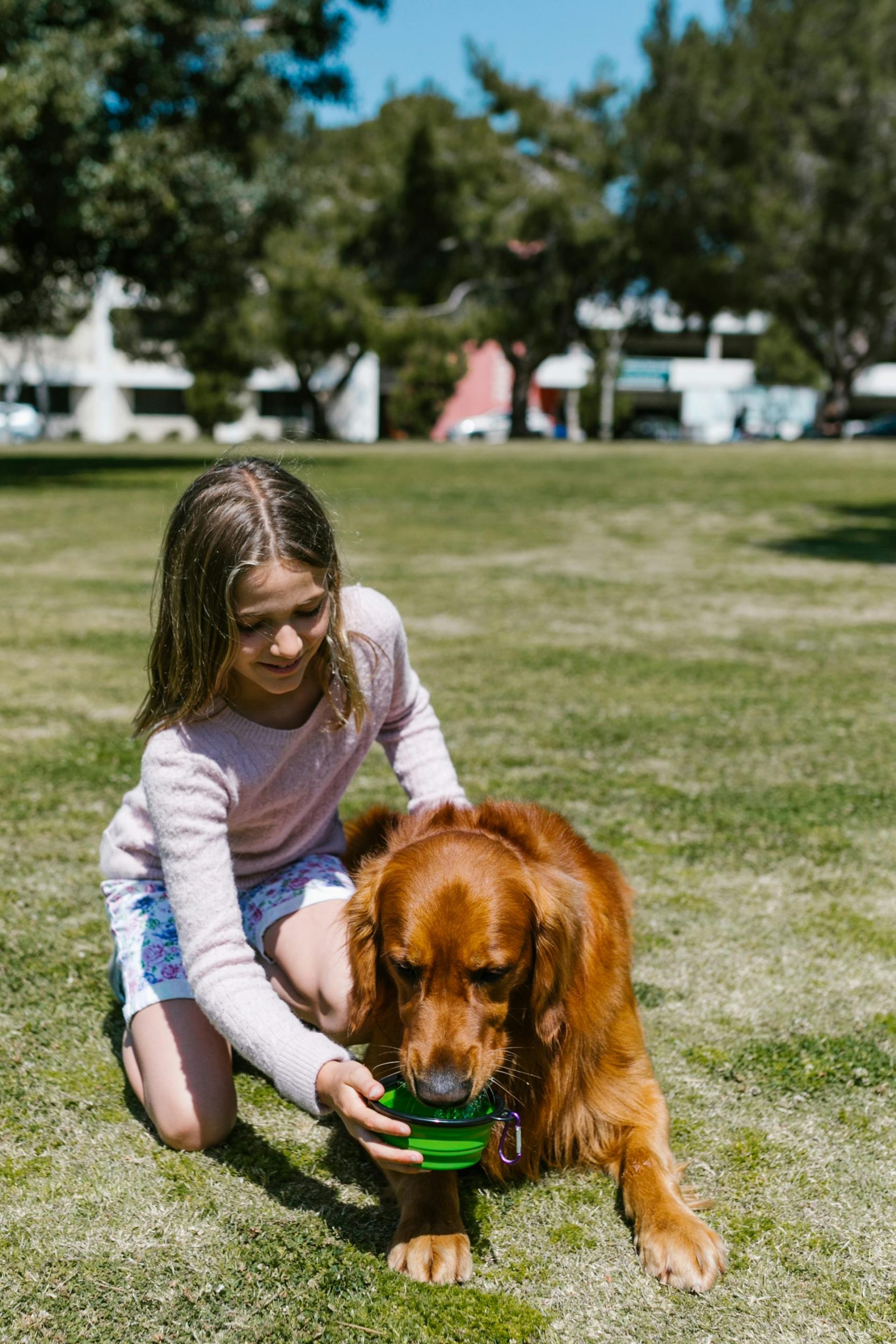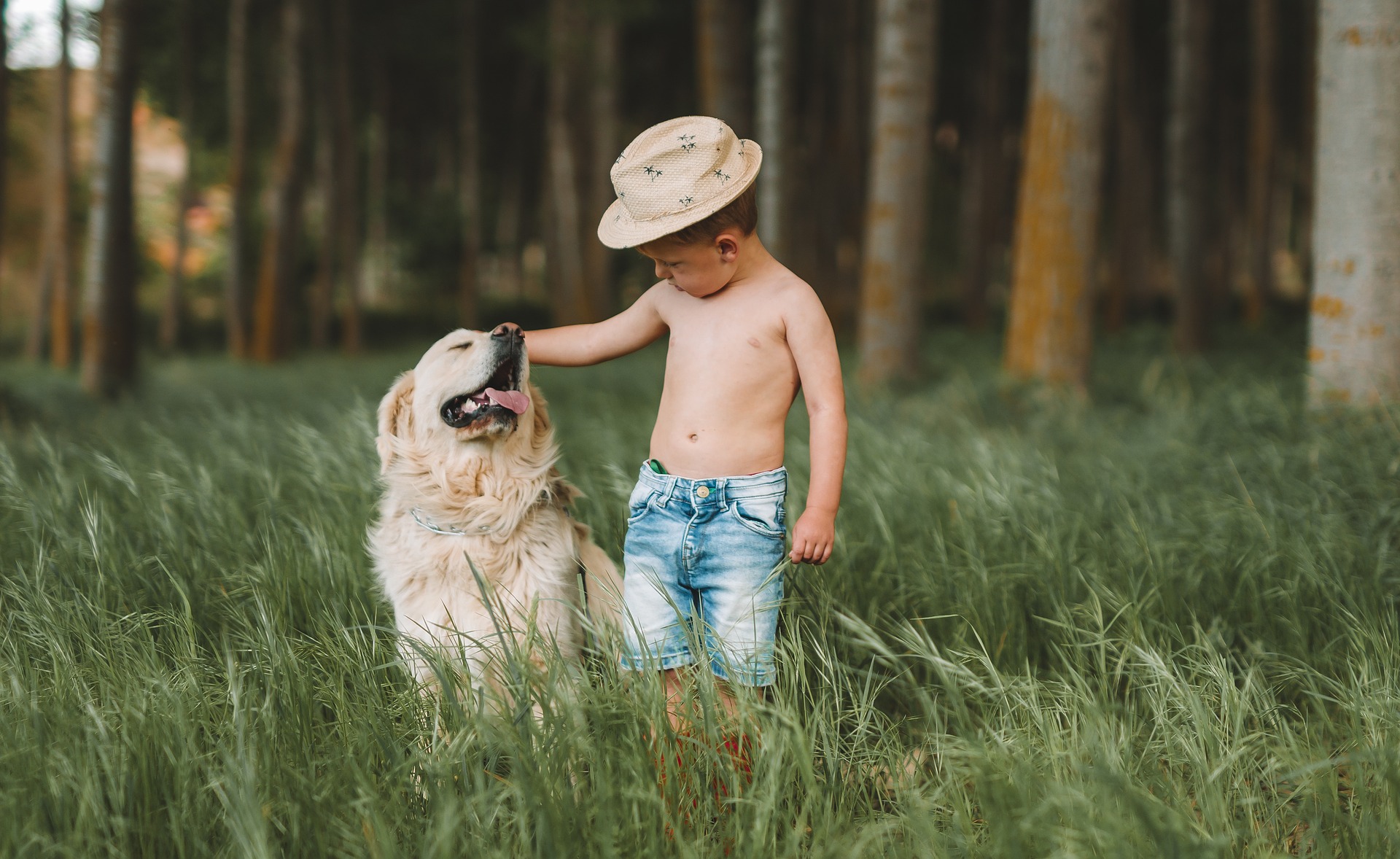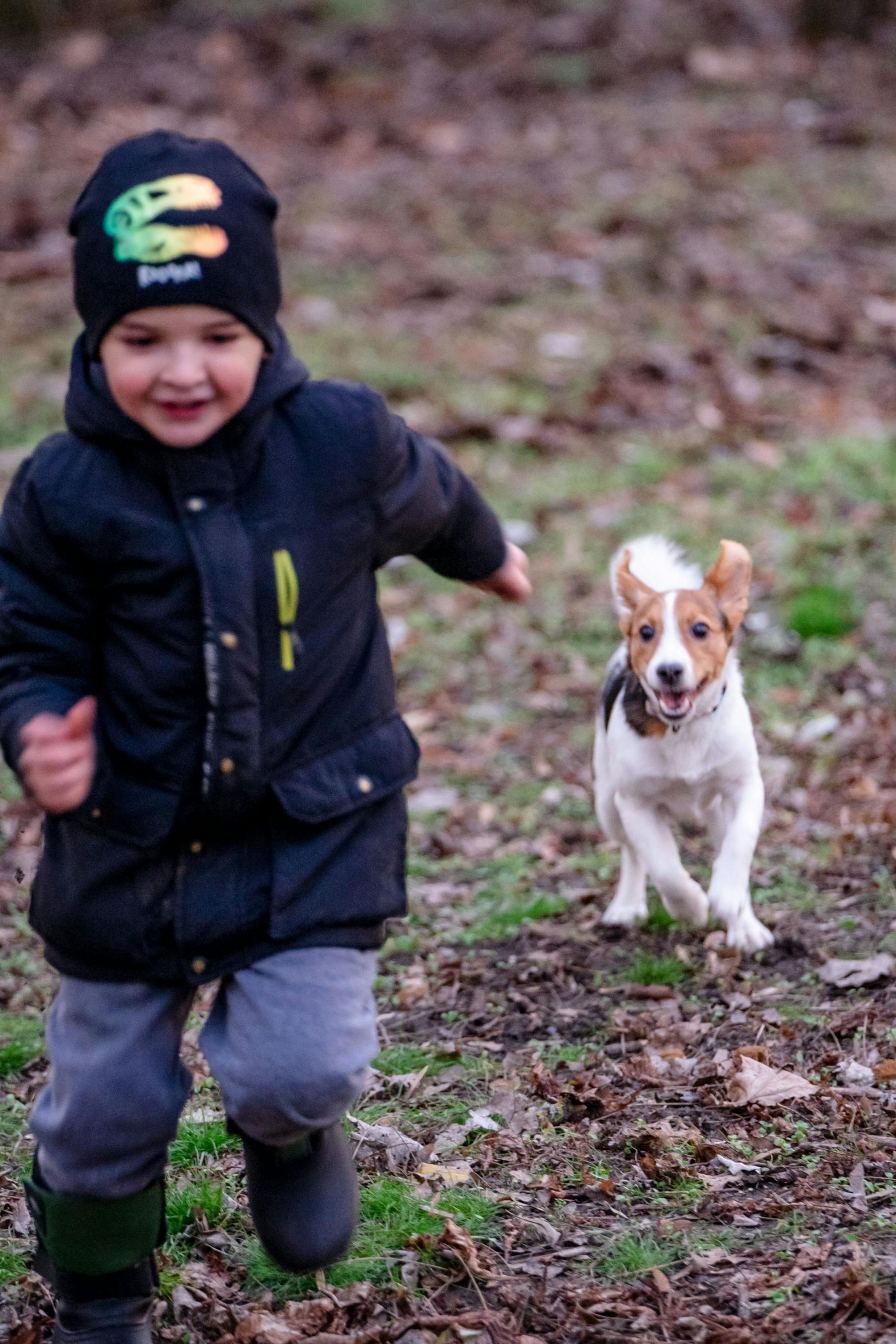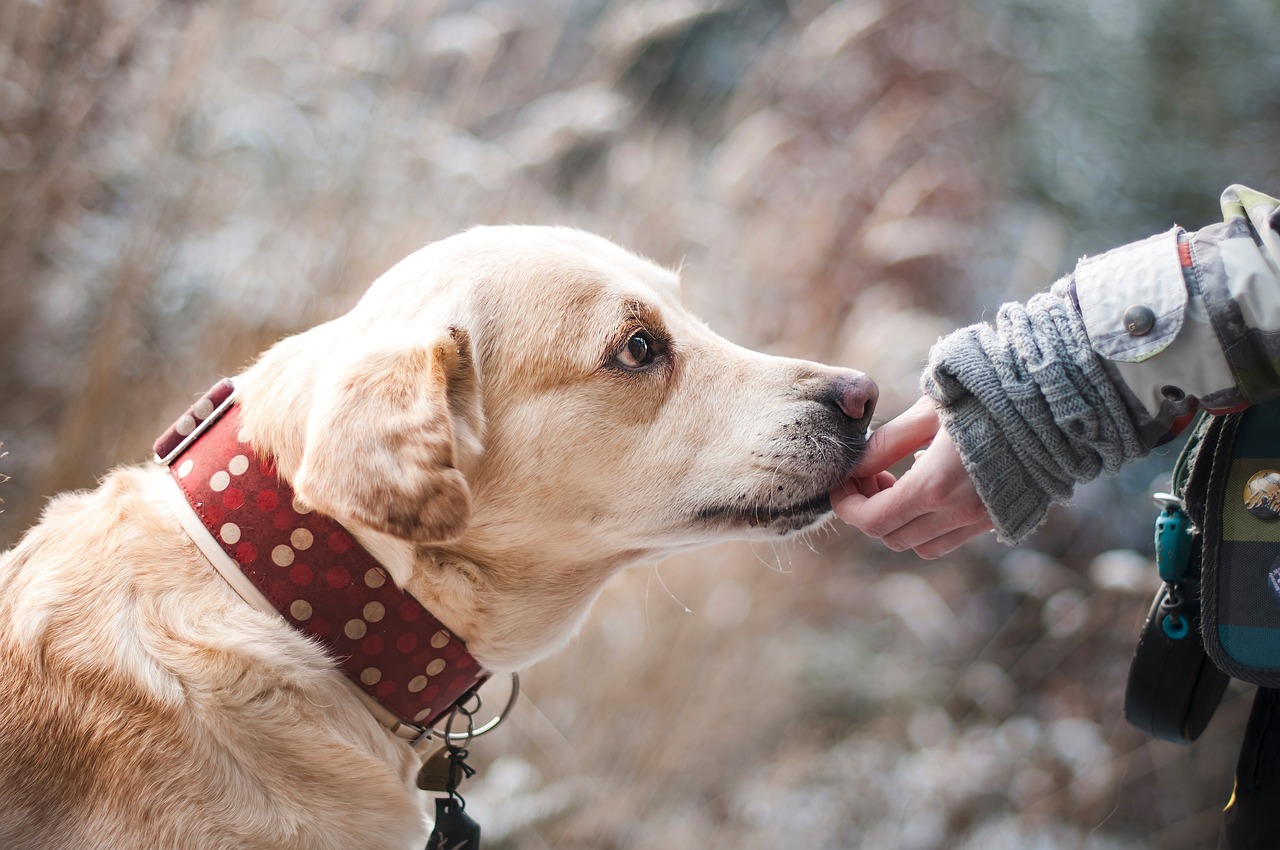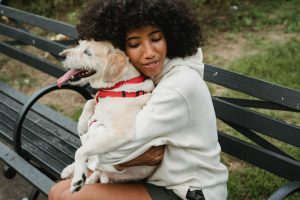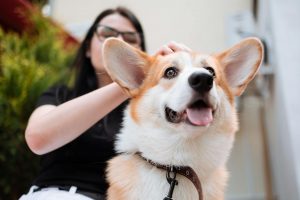Let’s say you have a dog that is very friendly with people. He has no problem letting people come to him and pet him. He doesn’t hesitate to approach people. But when a kid comes near him, he might growl or scream and scare the young child. And if the child gets too close, your dog might even attempt to bite its hand.
Even the most social dogs might not be fond of children. Do you want to know why some dogs do not like children? And what can you do in such a situation? Let’s take a look.
Why Dogs Do Not Like Children
There might be many reasons why your dog doesn’t like children. Yet, in most cases, we can group these reasons into three groups.
- Lack of socialization: Your dog didn’t have enjoyable interactions with children during puppyhood. For these dogs, children seem scary and overwhelming. Socialization is important to expose puppies to new environments, people, and situations. But merely exposing is not enough. You have to create positive associations.
- Traumatic incident: Has your dog gone through a series of unpleasant sessions with children? Some activities might seem innocent, and even cute. But they are not pleasant to dogs. For example, a child takes a dog’s toys away. This might create a negative association with your puppy.
- Unpredictable behavior: Let’s be honest, children run, yell, tug, hug, tease, and everything in between. Their behavior can be overwhelming and overstimulating for dogs. Try to allow your dog to relax and stress out.
Is Your Child Forcing It?
If a dog has growled at a child, you should never allow the situation to progress from there. Even a few seconds can turn the growl into an incident.
In some cases, children might be the ones forcing an interaction with dogs. Some children might push themselves on the dog. Children might make a dog stay put when they do not want to.
What seems like an adorable hug, might be uncomfortable for a puppy. Children hug dogs around the neck, and that might seem aggressive to some dogs.
Or here is another scenario. A child that insists on walking the dog on a leash, when the puppy doesn’t want to. What happens is the dog ends up getting dragged. Children might not understand that dogs want to stop and sniff during walks.
How to Teach Your Child to Act Around Dogs?
The best way to ensure a safe and secure interaction between dogs and children is to teach both of them. Dog training focuses on teaching dogs appropriate behavior. But we also have to teach our children how to interact with dogs.
No dog should be forced into an interaction with a child. Dogs are not toys to play with. Here is where to start.
With your supervision, let the kid call the dog by its name, from a distance. See if the dog will want to come and play. If the dog comes, then let your child give the dog a treat. Continue working on the relationship. Build positive associations.
Now let’s talk about how you pet a dog. First, pet the dog together. Take your children’s hand in yours, and touch the dog together. Kids need to learn what a gentle touch is. Then, teach your dog to pet a dog with an open hand on the back. Get your child’s hand in yours, and practice petting the dog on the back. Last, but not least, praise and reward the dog with treats.
Once your child gains your dog’s trust, you can move forward to more complex exercises, like walking the dog.
Pay Attention to Body Language
We have to talk about a specific situation. Many dog-biting children incidents happen because pet parents do not pay attention to body language. No dog will react or attack before giving a warning.
That warning comes in the form of whale eyes. It is when your dog averts his head slightly, with his eyes staying fixated on something or someone.
It is your dog’s way of saying “Help me and get me out of this situation”. If you notice your dog gives you this look, with the whites of his eyes appearing in a half-moon shape, act on it. Get your dog out of the comfortable situation. If you do not help your dog, and the young child continues to push it, your pup might react in the only way he knows, bite and attack.
Desensitize Your Dog
If your dog shows signs of anxiety around young children, one method you can try is desensitization. The sooner you begin, the better.
Start with a low threshold. Find a small park around your home, and take your dog on walks by the playground. In the beginning, walk quickly by the playground and keep your dog’s attention away from the young kids.
Praise your dog for every successful passing. That means no barking, lunging, growling, or any other sign of aggressive behavior.
Keep your pooch off of the walking path when children approach you and distract him until they pass. Again, praise when your pup is calm and friendly.
The next step is to stay on the walking trail when kids are approaching. But, make sure the kids are calm and walking, not running and screaming. Make sure your dog stays next to you and on the opposite side of the children.
You can now move slowly by the playground and start allowing calm children to pet your dog for a short period. Only if your dog allows it. Get down on your pet’s level and comfort him while the kids are petting him.
From there, you can start making short breaks at the playground and allow as much exposure and petting as your dog is comfortable with.
The goal is to make small strides and make your dog as comfortable as possible. But, always stay away from screaming children who run. Until your dog is completely fine with calm children, you should not try to desensitize running children.
Always Be Safe
Remember, if your dog is not happy around kids, you should never push the situation. It is okay for dogs to dislike children. But it is your responsibility as a pet parent to ensure encounters stay safe.
You have to play the zoo keeper and manage the situation. Set up your dog for success, and with desensitization, in time, your dog will be more comfortable.
Even so, when there are kids around, always supervise interactions and make sure there is no risk. The moment you notice your dog feel discomfort, move away from the situation.
What Not To Do?
When you are a parent to dogs and children, you have to pay attention to everything. You cannot ignore a dog’s discomfort with little kids. That will not make the anxiety go away.
Dealing with reactivity is a challenging issue. If you have trouble handling the situation, ask for professional help.
The worst thing you can do is make your dog face his fears. If your dog is not comfortable around children, forcing interactions can backfire in the worst possible way. Do not put your dog in a situation where he cannot get away. For example, owners hold their dog so that a child can pet him. Your pup will not enjoy it, and it will only get more uncomfortable.
Instead, give children a treat, and let them offer it to your pup. If the dog comes willingly and allows touching, it is fine.
Are You a Bad Pet Parent?
No, you are not a bad pet parent if your dog doesn’t like children. Not all dogs are comfortable around children. Some dogs are simply not family pets. Yes, it can be embarrassing if your dog is reactive and aggressive around children.
Being a pet parent to a dog that doesn’t like children brings its own set of challenges. You have to be alert and aware. As a responsible dog owner, it is your job to keep all parties safe. You can also work with an animal behaviorist to try to solve the underlying issue.
And a quick reminder. A dog that is fine with kids is not the same as a dog that is good with kids. Some dogs tolerate interactions, but they can tip over into reactivity if pushed beyond their limits and comfort zone.

